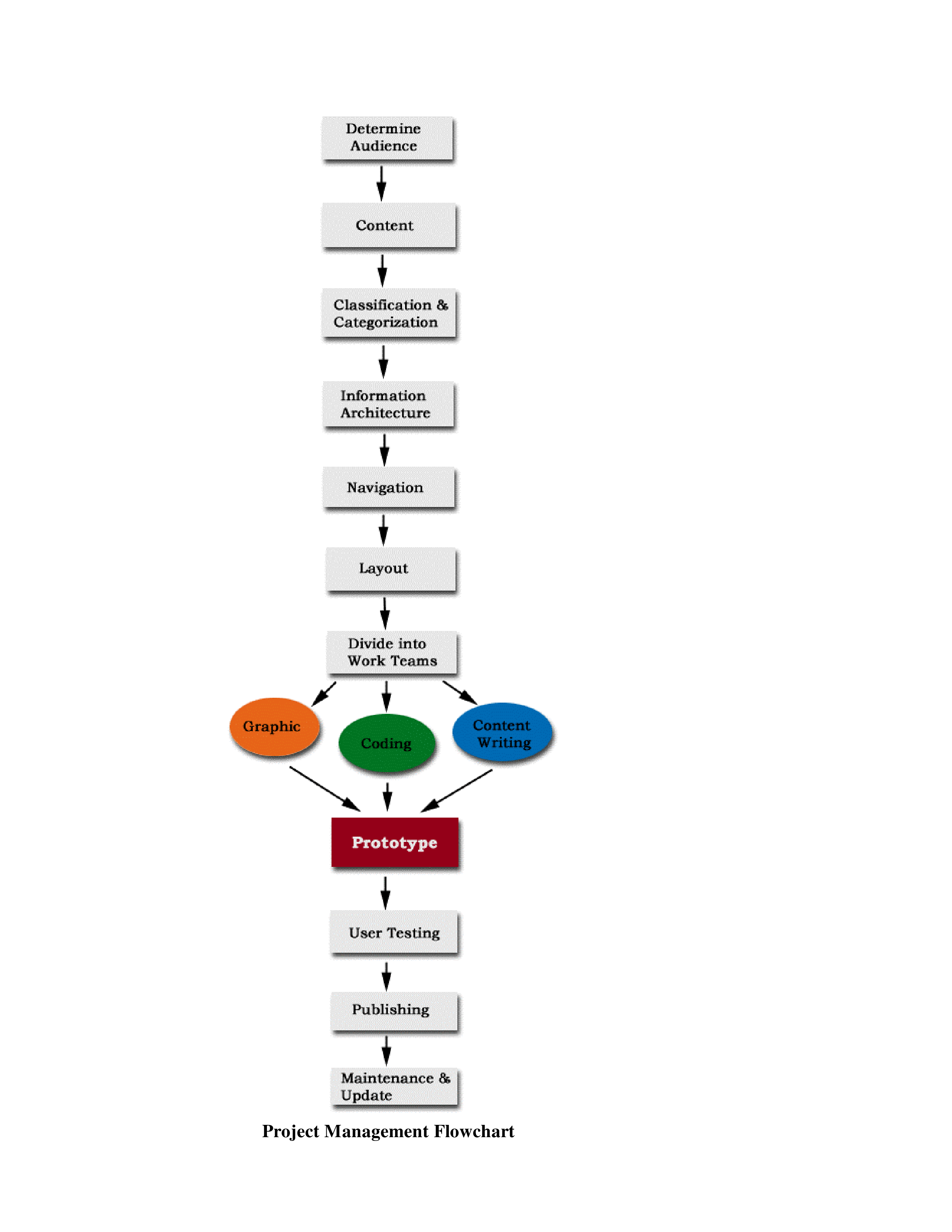Project Management Flow Chart
Save, fill-In The Blanks, Print, Done!

Download Project Management Flow Chart
Adobe Acrobat (.pdf)- This Document Has Been Certified by a Professional
- 100% customizable
- This is a digital download (44.02 kB)
- Language: English
- We recommend downloading this file onto your computer.
Adequate communication is essential in order to finish projects successfully. In order to gain truthful and accurate information, you need to make sure that program- or project managers are able to make rational and correct decisions. For those who have, what we call, a "high-performance mindset”, we know they prefer to work with the latest update of professional project management templates, in order to achieve their goals faster. We are certain this Project Management Flow Chart will be of value.
Project Management Flowchart Determine audience • Identify Target audience (For existing students, potential students, parents, staff or potential corporate sponsors, etc.) • Identify any technical issues with your target audience (Disabilities, connection speeds, etc.) Content • Determine major Goals and all topics • Anticipate what questions your visitors will have when they come to your Web site • Perform necessary research (from Internet, students, and colleague) • What other services do you want the site to provide (Links to other web pages of interest, provide downloadable files, or want to allow email enquiries to be sent direct to your email account.) Classification and Categorization • According to relationship, divide topics into the main groups, or subgroups • The home page should branch to a maximum of 5 or 7 main categories only.
- Identify any technical issues with your target audience (Disabilities, connection
- Determine major Goals and all topics
- Anticipate what questions your visitors will have when they come to your Website
- Perform necessary research (from the Internet, students, and colleague)
- What other services do you want the site to provide? (Links to other web pages of
- According to relationship, divide topics into the main groups, or subgroups
- The home page should branch to a maximum of 5 or 7 main categories only.
- Clear Labeling: using short and descriptive phrases to summarize the features of the groups.
- Create a web site flowchart
- Considering the depth of navigation: The primary structure for web information is a hierarchy. The hierarchy should be a few levels deep as possible, consistent with a clear presentation of the information.
- Considering connectivity: Links must be provided between the different branches to aid navigation and usability.
Feel free to download this Project Management Flow Chart, or simply browse through our other basic or advanced template designs. They are intuitive and in several kinds of formats, such as PDF, WORD, XLS (EXCEL including formulas and can calculate sums automatically), etc. Using this project management template guarantees that you will save time, cost and efforts and makes you more successful in your project, work and business!
Completing your Project Management Flow Chart was never easier! Download this file now!
DISCLAIMER
Nothing on this site shall be considered legal advice and no attorney-client relationship is established.
Leave a Reply. If you have any questions or remarks, feel free to post them below.
Related templates
Latest templates
Latest topics
- Excel Templates
Where do I find templates for Excel? How do I create a template in Excel? Check these editable and printable Excel Templates and download them directly! - GDPR Compliance Templates
What do you need to become GDPR compliant? Are you looking for useful GDPR document templates to make you compliant? All these compliance documents will be available to download instantly... - Google Docs Templates
How to create documents in Google Docs? We provide Google Docs compatible template and these are the reasons why it's useful to work with Google Docs... - IT Security Standards Kit
What are IT Security Standards? Check out our collection of this newly updated IT Security Kit Standard templates, including policies, controls, processes, checklists, procedures and other documents. - Letter Format
How to format a letter? Here is a brief overview of common letter formats and templates in USA and UK and get inspirited immediately!
cheese

